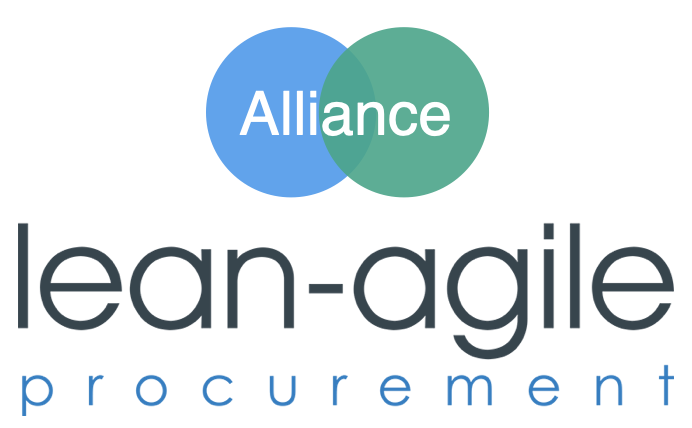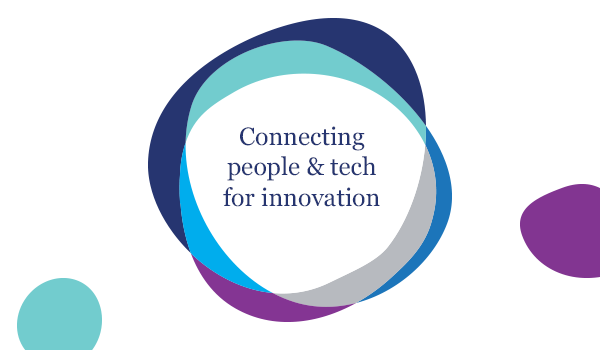What could Business learn from Startups?
In Agile organisations, external partners are often treated as suppliers instead of partners, not recognising the opportunities they could potentially bring to their teams. In faster changing and complex environments, it will become a competitive advantage for companies to have fast access to an ecosystem of trusted partners with matching values and a fast contribution to goals. Join us this Friday as Mirko Kleiner will discuss what businesses could learn from startups in how they work with external suppliers.
I'd like to share the slides of my talk from the meet up "Future Friday" at Leiden University, the Hague.
Abstract
In Agile organisations, external partners are often treated as suppliers instead of partners, not recognising the opportunities they could potentially bring to their teams. In faster changing and complex environments, it will become a competitive advantage for companies to have fast access to an ecosystem of trusted partners with matching values and a fast contribution to goals. Join us this Friday as Mirko Kleiner will discuss what businesses could learn from startups in how they work with external suppliers."
Future Fridays
If you want to know more about the Future Fridays at the Center of Innovation, Leiden University check here
Slides on Slideshare
Impressions
Author
Slides from my Speech "Success Factor Agile" from Agile Bodensee Conference, Konstanz/Germany
Approximately 60-90% of all sales are in the hands of procurement, which is a key success factor for companies. At the moment, digitization is taking place, especially in the area of imple procurement. However, the latest study by the University of St. Gallen shows that there is no recipe for the effective procurement of complex products and services. Does agility offer a solution? - It is about billions and thus nothing less than the survival of suppliers and customers!
Abstract
Approximately 60-90% of all sales are in the hands of procurement, which is a key success factor for companies. At the moment, digitization is taking place, especially in the area of imple procurement. However, the latest study by the University of St. Gallen shows that there is no recipe for the effective procurement of complex products and services. Does agility offer a solution? - It is about billions and thus nothing less than the survival of suppliers and customers!
If we agile coaches draw an ideal organization, it usually looks like a network organization consisting of agile, autonomous cells. Up to now, our focus in agile transformation has been on the customer and to the internal organization. In the future, agility will cover the entire value stream and thus also the agility of our partners.
As external partners are often closely integrated into the agile organization they became an essential component of the value stream. However, many are still being treated as suppliers with a focus on a price as low as possible, instead of partners on equal terms with additional innovation power. In an ever more rapidly changing, more complex world, it becomes an integral success factor for a company to have quick access to an ecosystem of adaptive partners. Therefor we have to adapt our sales and procurement as well.
KEY TAKE-AWAYS
Please find below the most important key take-aways of the speech:
- the market is changing dramatically. Small vendors could stop production lines of big companies such as VW (27'000 Employees where blocked) and procurement was unable to react in time.
- new developments like e.g. 3D-Printing offer new possibilities to solve complex problems in development and production with fast delivery (Lead times of DAYS to WEEKS), so that it makes no sense to spend months for procurement any more
- for reaching true business agility companies need to create there own adaptive partner ecosystem. This will become a much bigger multiplier for business as today.
- the lean procurement canvas and lean-agile procurement have the potential for a disruption as the business model canvas and lean startup had for business development
- the lean procurement canvas is simple. Find an example in the slides
- The lean procurement canvas is the most LEAN agile contract right after a verbal contract
- there are success stories out there that sourced a new partner in 4 days instead of months, while the people that would work together evaluated each other in an agile approach.
Slides on Slideshare
Author
Public sector in the Nordics is showing us what's possible with agile@procurement
The agile procurement conference in Stockholm, organized by members of crisp.se, is a unique format with a unique audience. It proofs what would be possible in the public sector and purchasing using agile. This blog post is about my personal summary about it. I really can recommend it, meet you there next year!
The agile procurement conference in Stockholm, organized by members of crisp.se, is a unique format with a unique audience. It proofs what would be possible in the public sector and purchasing using agile. This blog post is about my personal summary about the version 2017 from February the 22nd. I really can recommend it, meet you there next year!
The agile procurement conference brings together the agile community and it’s modern approaches with the governance authority, professional procurement managers, lawyers, customers and vendors from the public sector. Generally it was a very good mix of talks, networking and active learning. I was surprised how interested the audience followed all the talks, no matter if it was about a success story of a project (done different), frame conditions by the law (tipps and tricks to use those right) and agile practices (to improve classic behaviors).
Talks were held by (summary translated from http://agilakontrakt.se):
Lars Nilsson - how they procured and built Karlstad Hospital, an awarded project with a budget of about €1'000 million. --> Read the interview with Lars Nilsson
x-functional working groups split by customer need
- Results: Effective health care, centered on the patient, on time and with 300Mkr of the Värmland County Council.
- The most important lessons: The importance of the target work, prototyping and to remove short-term economic incentives so that all participants put 100% of their focus on building the right solutions. Those turned out more cost/time-effective in implementation and later on in usage and maintenance
Rikke Halland - On the digitized Danish Company Agency using 5 suppliers and agile contracts. A 600Mkr applications containing 29 sub-projects.
Customer & user benefits
- Results: 100 & projects delivered 100% of the budget, 80% of the time. Number of support calls / application has decreased by 40% and the average time an employee spends on each case has fallen by 69%.
- The most important lessons: The importance of shared vision, shared risk, and building a culture of learning that builds trust between the customer and the supplier was essential building blocks.
Bjorn Bergström lawyer at Ramberg, the possibilities of using Agile contracts under the LOU. Bjorn pointed to the most common pitfall for attorneys, focusing on legal definitions and details, and thus missed to create the conditions for the business objective.
Tomer Shalit client expert from Crisp how they Sussagruppen (several counties) found a moderate level when ordering healthcare solutions. The trick is to identify the needs (instead of the requirements) and create a visual overview of the content using the User Transaction Flow.
Mirko Kleiner creator of lean agile procurement from flowdays.net how a more lean and agile approach for procurement could disrupt and reduce classic procurement (Examples in Energy-/Insurance Sector) to days instead of months. The trick is to focus to customer needs (using the lean Procurement Canvas) and allow collaboration of all stakeholders at one time.
Common building blocks for these projects are:
- Clear outcome targets (and the importance of anchoring the target image of all participating parties)
- An active customer and partner
- Choosing partner of maturity and demonstrated ability (rather than promises and lowest price)
- To build the solution with partial deliveries and prototyping. (Lars showed eg. How prototypade develop new operating room before they were built)
- Visual planning and joint overview
- Collaboration and co-location
Special Thanks to Mia and her Team, it was a pleasure meeting you in person!
Find out more about the agile procurement conference visiting https://agila-upphandlingar-inom-lou.confetti.events and the organizers website http://agilakontrakt.se.





